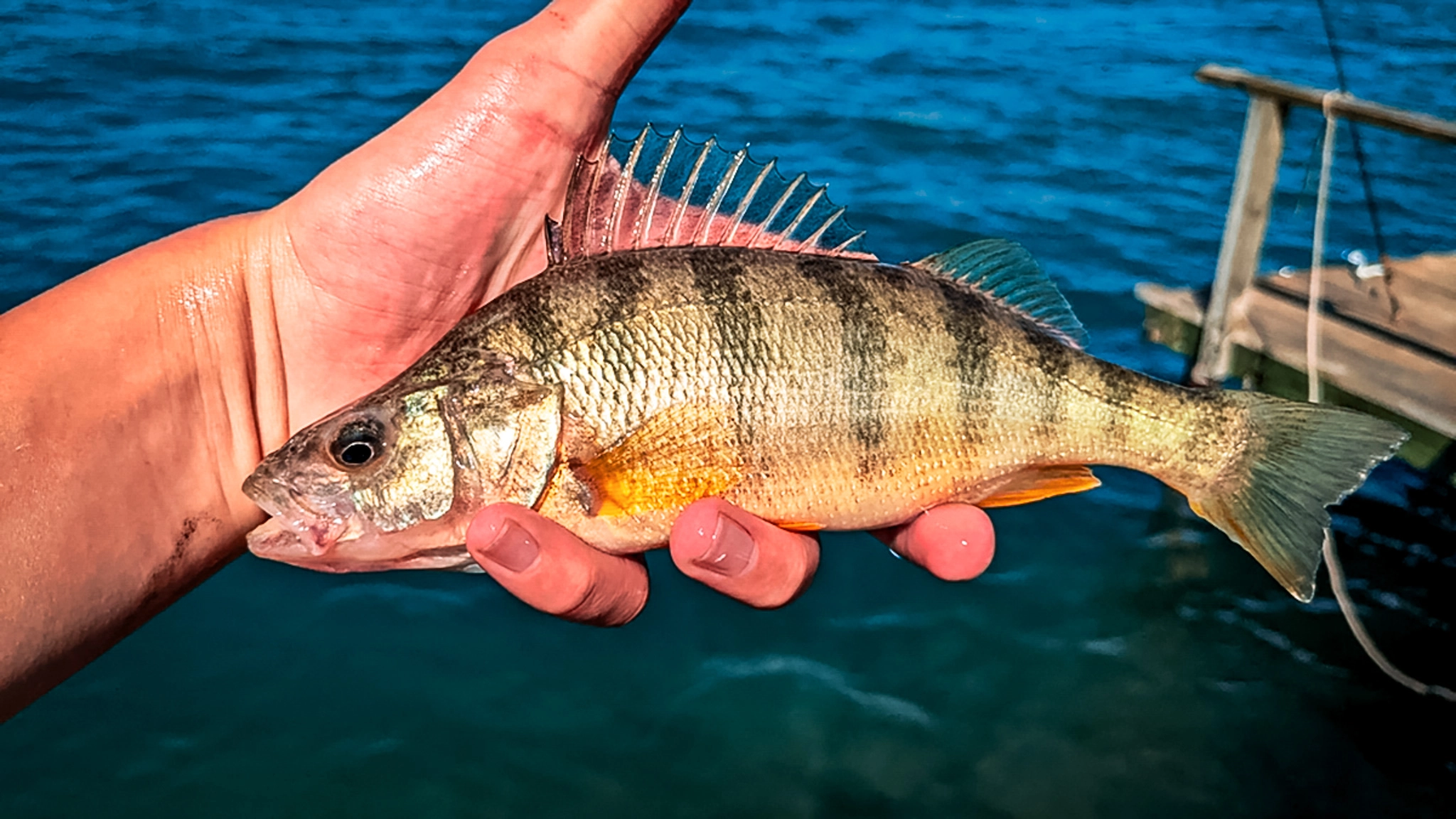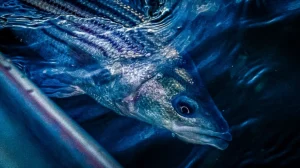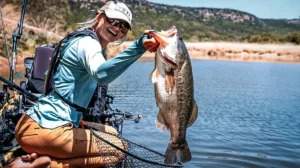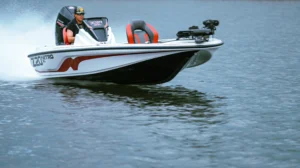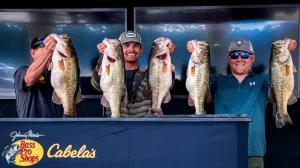Yellow perch are one of the most downright fun gamefish species found on the entire continent. They’re also one of the best tasting and most popular fish, identified by their distinctive yellow color and green bars down their side.
Also known as lake perch, ring perch, river perch, and common perch, the fish can be found pretty much anywhere in lakes, rivers, and ponds. They are attracted to vegetation in the water and they definitely prefer things cold, which makes them a top quarry for ice anglers — they’re truly a gamefish you can target all year long.
Here’s everything you ever wanted to know about yellow perch, because knowing your target is half the battle.
Yellow Perch Facts
- The IGFA world record yellow perch was caught in 1865 in Bordentown, New Jersey, and weighed 4.3 pounds
- Schools of perch range from 50 to 200 fish, with the larger fish on the perimeter and the smaller ones in the middle
- Yellow perch can reach a maximum length of about 16 inches and weigh over 2 pounds
- The fish live 10 to 11 years
- Their primary predators are walleye and largemouth bass
- Yellow perch grow faster in systems with a large number of other species
- In places where yellow perch outbreed other species, their populations can become stunted
- Yellow perch are most common in the Great Lakes region, particularly in the St. Lawrence River and Mississippi River basins

Yellow Perch History
Around 1814, Samuel Latham Mitchill, an American naturalist, physician, and politician first described the yellow perch (Perca flavescens). In Greek, “Perca” or perke translates to perch or the type of fish being described. The word “flavescens” in Greek translates to the color yellow.
Yellow perch belong to the Percidae family: the second-largest family of fish in North America, with 200 members, which also includes walleye, zander, saugars, and darters. You’ll sometimes see yellow perch called coon perch, striped perch, sand perch, lake perch, ring-tailed perch, river perch, striped perch, coontail, and American perch.
How To Identify Yellow Perch
Due to their distinct appearance, yellow perch are one of the easiest freshwater fish to identify. They have a gold-to-yellow color with six to eight dark, vertical bars. These bars start at the operculum and continue to the caudal fin (tail fin). The bottom fins of the yellow perch also have an orange-to-yellow tint. However, the coloring of these fish can change due to age, diet, and the habitat in which the fish is caught.
When coloration or markings are uncertain, the anatomical parts of this fish can be used for identification. Yellow perch are torpedo-shaped and kind of chunky with a mouth that sits in the middle of the face and comes to a point when the jaws are closed. The eye will line up with the edge of the jaw when viewing it on its side.
The operculum flap, also known as the gill cover, is used to protect the gills of the fish. In the case of the yellow perch, the flap has no scales. The scales will begin behind the operculum flap and run the entire length of the body.
Speaking of scales, this species has ctenoid scales that are square with rounded edges. They feel smooth to the touch if you run your hand from the front of the fish to the tail. However, if you run your hand from the tail of the fish to the head, the scales will feel rough, and their edges will catch at your hand.
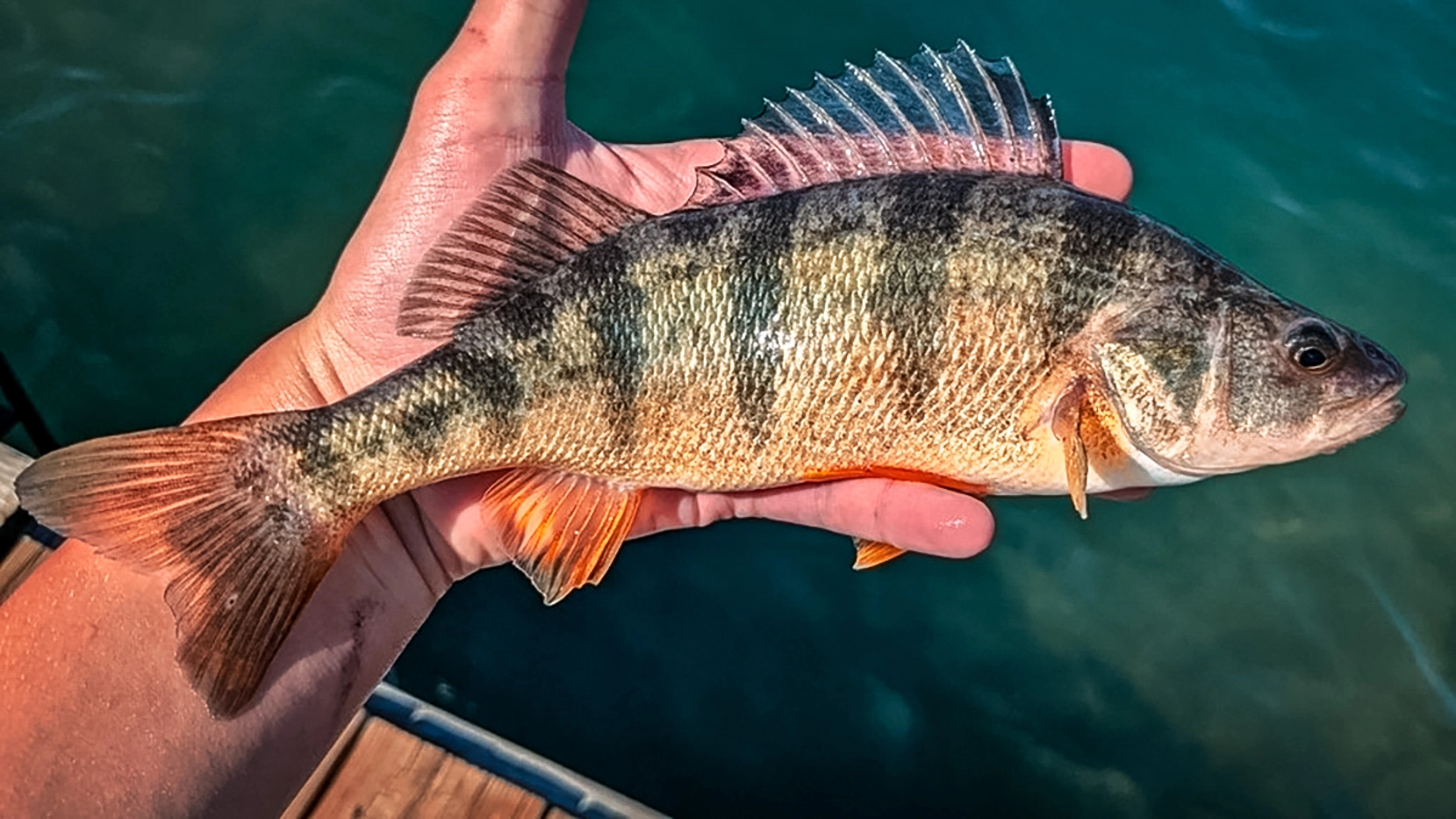
You can also use the dorsal fin to help ID yellow perch if the eye or mouth shape is in question. It is divided into two sections; when the fins are fully erect, the first section will be rounded and the second will appear triangular. On the front dorsal fin you may notice some black colorations between the rigid spines. Both sections of the fin may also have small black spots.
The front dorsal has 12 to 14 spines inside that can damage your hand, so use caution when handling. The rear dorsal fin has a smooth texture and is often referred to as the soft-rayed section. In total, yellow perch will have 12 to 14 soft rays.
On the belly, there will be a set of pectoral fins that range in color from translucent to orange. These fins act as rudders for yellow perch and help them maneuver while swimming. The pelvic fins are located immediately under the pectoral fins and range in color from orange to yellow. Further you’ll find the anal fin. At the beginning of the anal fin there are two rigid spines followed by six to eight soft rays.
Lastly, the caudal fin (tail) will be slightly forked with rounded edges.
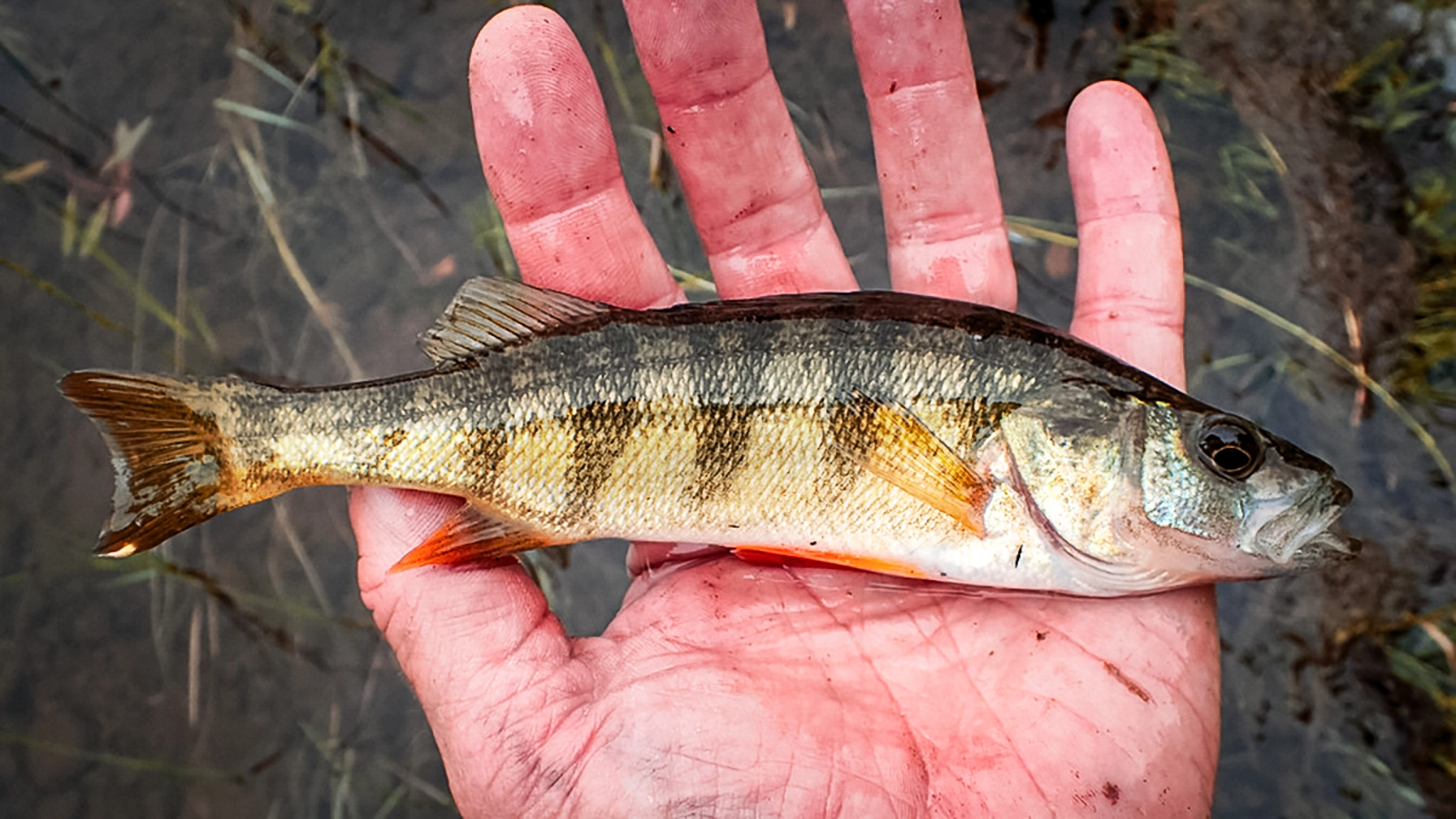
Where To Find Yellow Perch
Yellow perch are a highly adaptable species that thrive in a wide range of habitats. However, certain factors such as water temperature, salinity, disease, and spawning resources can prevent this species from spreading to new areas.
Most of their original dispersal can be credited to glacial recession. They can naturally be found throughout North America in Nova Scotia, Quebec, Alberta, and most of the northern United States east of the Rockies, aka the Great Lakes region. Their native range extends south into Ohio, Illinois, and through much of the Northeast. Yellow perch have also been introduced throughout the U.S. and even in China and Japan.
Most of the introductions in America were conducted by the now defunct U.S. Fish Commission in the late 1800s and early 1900s with the goal of creating recreational fishing opportunities and improving the forage base for existing fisheries. The agency introduced yellow perch to northern Missouri, western Pennsylvania, South Carolina, Maine, and much of the Pacific Northwest and Southwest regions.
Spawning Season
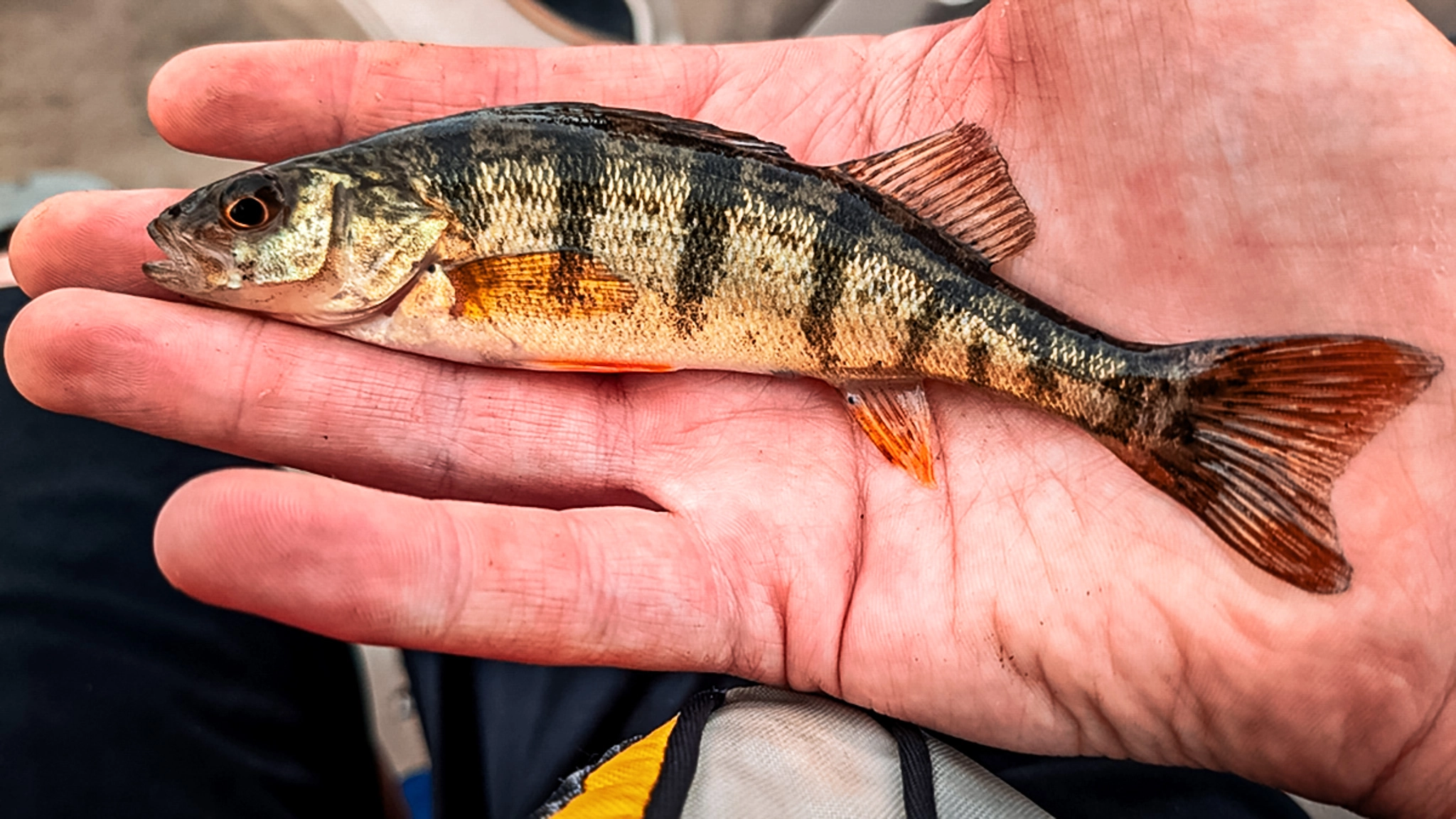
The spawning season for yellow perch can start as early as February and run as late as June in the northern parts of the United States and Southern Canada. When water temperatures reach about 45 degrees, the fish are ready to spawn. They have an interesting method of spawning compared to other species. Unlike largemouth bass, which build nests, yellow perch will spawn in large groups, but they do not participate in broadcast spawning like paddlefish who release their eggs in open water. Instead, they will release their eggs over specific habitat.
Typically, the spawning process occurs in two parts. During phase one, a female yellow perch will swim across various types of habitat, expelling eggs in a clear to white strand, preferably areas with aquatic vegetation or standing timber, but they will use rocks and ledges if needed.
The egg strand will appear ribbon-like or may even look like pieces of spiderweb. The expelled egg strands are also sticky like a web, which allows them to stay in place for later fertilization. On average, a female yellow perch will lay between 10,000 and 40,000 eggs in egg deposits, and the strand can be up to seven feet long.
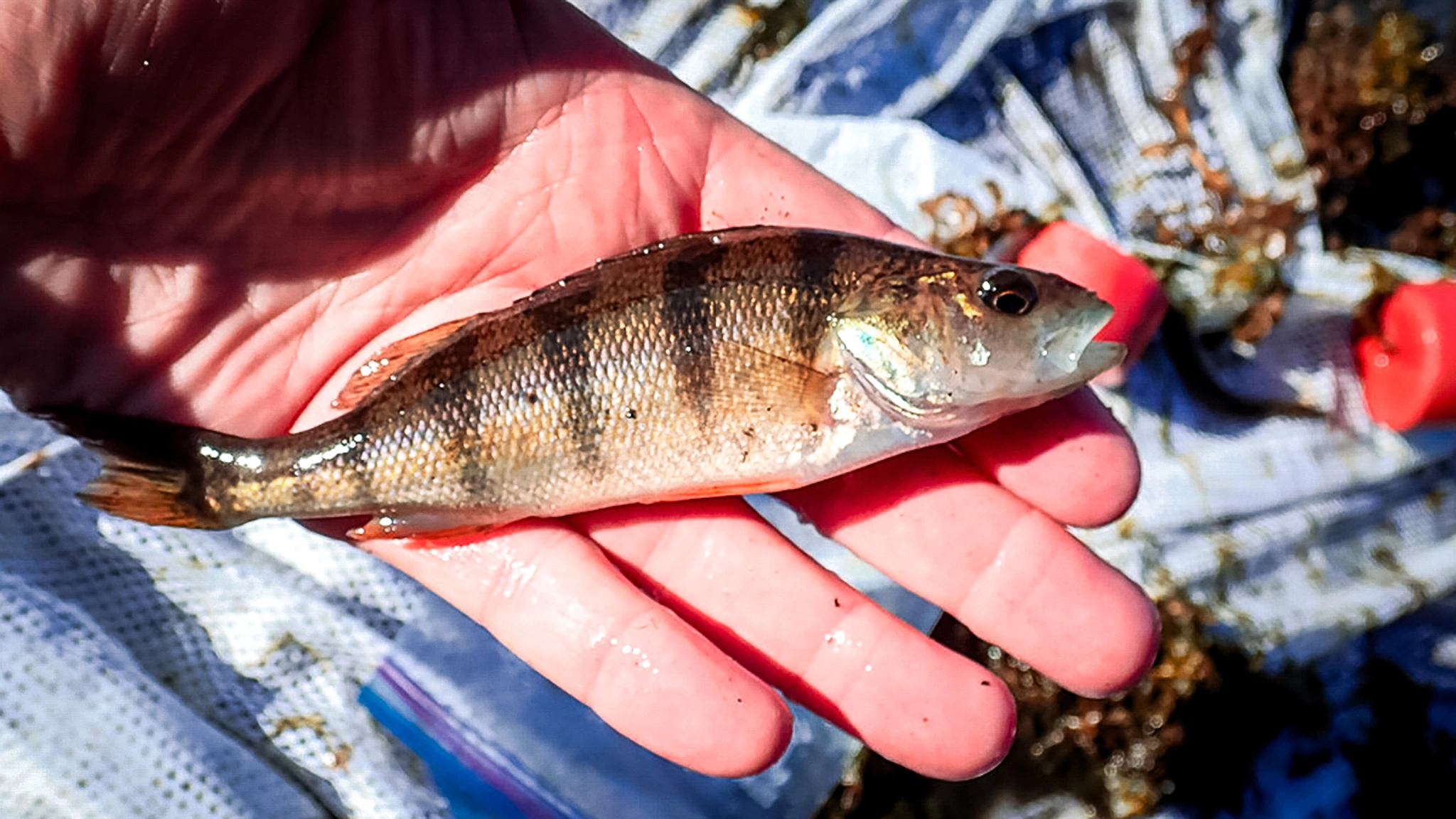
During the second phase, the males fertilize the suspended eggs. Typically, two to five males will school up and wait for a female to expel her eggs. They will then follow immediately behind the female and fertilize the strands of eggs.
Interestingly, yellow perch eggs are rarely eaten by other fish. It’s been suggested that the jelly-like sheath that binds the eggs together has a chemical that wards off other fish.
The eggs hatch eight to 10 days after fertilization and will absorb their yolk within five days of hatching depending on water temperature.
Size and Lifespan
Yellow perch are small forage fish that are extremely important to fisheries because they are part of the forage base that helps grow apex predators. Upon hatching, the average fry will be about 1/4 inch long and will feed on the yolk sac for a couple of days.
After the yolk sac is consumed, the fry will begin the process of finding and foraging upon microscopic zooplankton. The fish grow fastest during the first 90 to 100 days of life; yellow perch will achieve half of their total growth for the year during this period. Typically, after the first year of life, yellow perch will be 2 to 5 inches.
This speedy growth rate helps increase the species’ survival rate. The second year of life also sees a fast rate of growth so the fish can hurry up and get big enough to spawn. Some fish can can reach maturity after just two years, on average, most fisheries will see reproduction occur at three years of age when fish are between 5 and 7 inches in size.
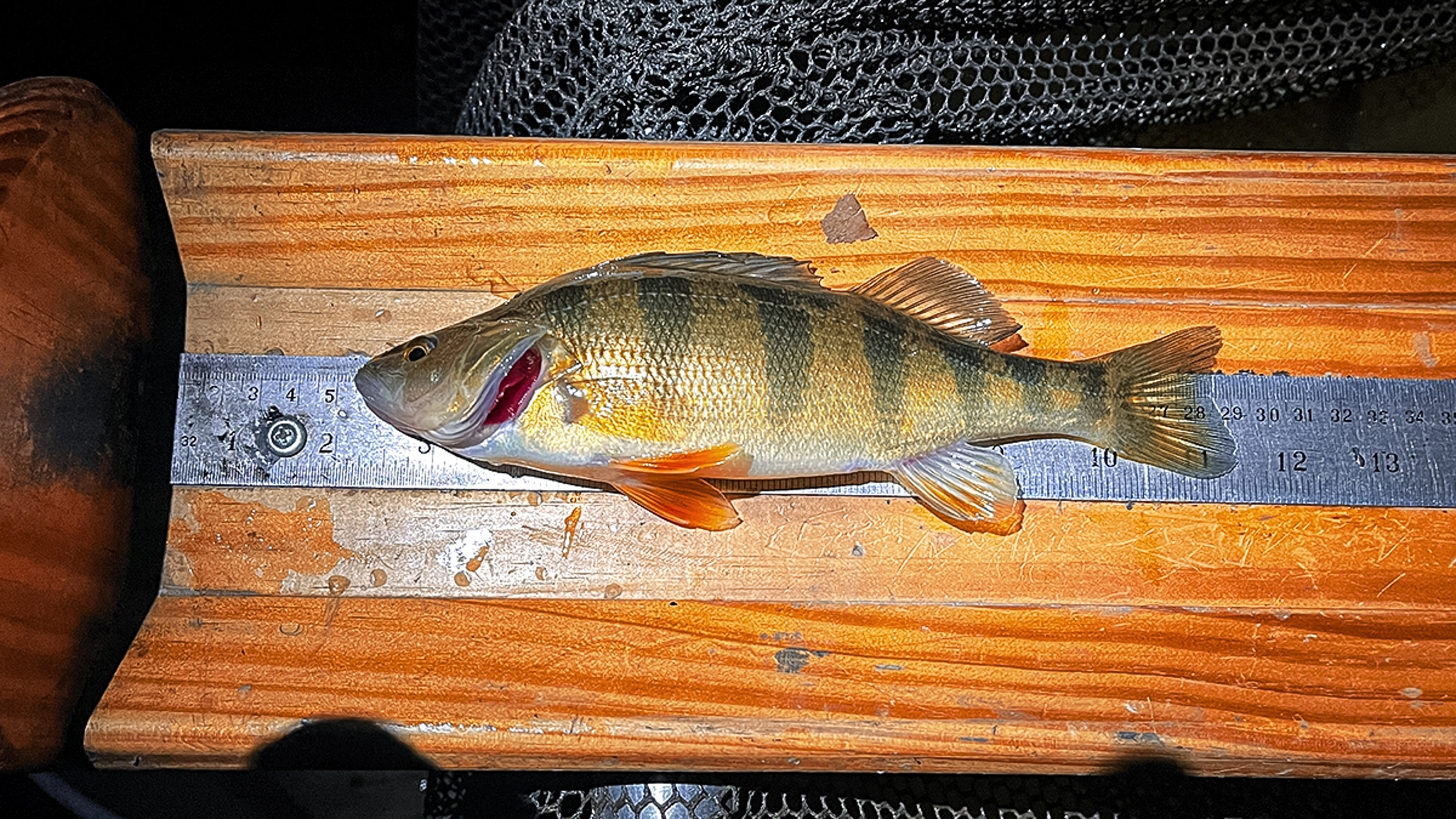
Female yellow perch will grow faster and ultimately be larger than males, whose rate of growth plummets as their metabolism prioritizes reproduction over growth. Females will continue to grow three to four inches per year over the next two years, reaching sizes of 10 to 15 inches in length and weighing about a pound at five to seven years old. Males get to about 1/2 pound and get to about 7 inches in max length.
The overall lifespan of a yellow perch is somewhere between seven and 11 years, which is determined by various factors like stress, water temperatures, forage abundance, and habitat.
Habitat
Yellow perch can be found in a variety of environments including lakes, ponds, impoundments, backwaters, and sections of rivers with little to no current; they’re weak swimmers and avoid areas with strong, fast currents. Their ideal waters are of moderate temperature between 63 and 77 degrees. While younger perch tend to be found in shallower water, all sizes of will move to cooler, deeper areas as temperatures rise in the summer.
Clear water is important to yellow perch, because areas with high turbidity can lead to death. While turbidity is an issue, perch do have a high tolerance for low oxygen conditions, which is why they are able to inhabit backwater areas.
They tend to school in high densities around aquatic vegetation, floating docks, and other aquatic structures. This is especially true in lakes and large ponds with muck, sand, or gravel bottoms. These areas provide everything perch need throughout their lifespan.
What Yellow Perch Eat
The dietary needs of yellow perch will change as a fish grows and matures. As described above, upon hatching, the frys eat their egg sac and then move on to zooplankton, which comprises their main diet for the first year and a half of life. When they become juveniles at 2 to 4 inches, their forage begins transitioning to small aquatic insects and tiny fish.
Adult yellow perch will typically consume aquatic insects, minnows, and other small baitfish — anything that will fit into their mouths. Yellow perch will even hunt down small crayfish when they’re available in lakes.
Yellow Perch Threats
Yellow perch face very few threats to their populations throughout their native range due to their ability to mature at a small relative size, their fast growth rates, and their diverse diet. Of course, they can always be eaten by larger fish, but at a population level, there are few widescale natural threats.
At the fishery level, it’s a different story. Populations are often significantly impacted by water usage practices.
Temperature, current, and habitat are the three primary factors affecting the health of a yellow perch population. Urbanization of our northern water bodies and increased usage and consumption of water leading to changes in flow rates and habitat. Specifically, the loss of aquatic vegetation due to wide-scale control methods can greatly reduce the annual recruitment of new yellow perch into the adult population.
Climate change and the potential for warmer winters can impact spawning timing by causing yellow perch to spawn earlier in the year than usual. If that happens, the zooplankton and other forage the fish need to grow may not be available to the hatch, leading to a die-off of certain year classes. A year or two of warmer winters could lead to a decrease in the overall population.


